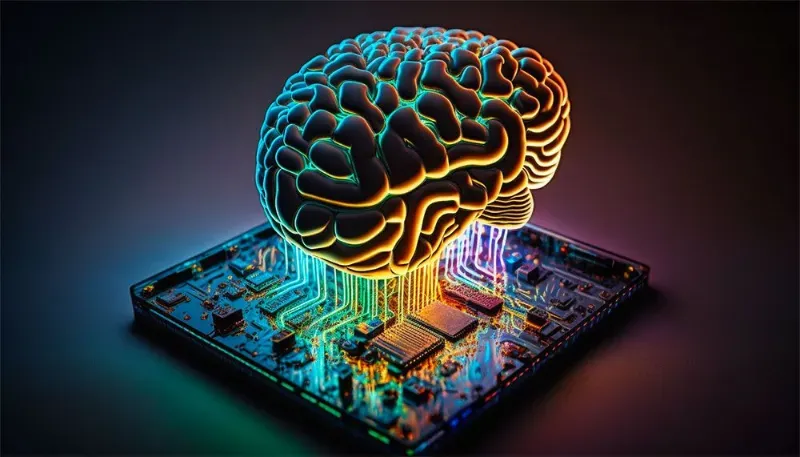Neuromorphic computing represents a revolutionary approach to artificial intelligence (AI) and computational neuroscience by mimicking the architecture and functionality of the human brain. At the heart of this innovation are neuromorphic chips, specialized hardware designed to process information in a manner similar to biological neurons and synapses. This blog explores the concept of neuromorphic chips, their underlying principles, applications across various domains, benefits, challenges, and the transformative impact on future technologies.
Understanding Neuromorphic Chips
Neuromorphic chips are hardware platforms inspired by the brain’s neural networks, where information is processed in parallel through interconnected neurons. Unlike traditional CPUs and GPUs, which use von Neumann architecture for sequential processing, neuromorphic chips leverage massively parallel computing and event-driven processing to emulate neural behavior. These chips integrate thousands to millions of artificial neurons and synapses on a single chip, enabling efficient and low-power computation.
Key Principles of Neuromorphic Computing
- Spiking Neural Networks (SNNs):
Neuromorphic chips utilize SNNs to model neural activity, where neurons communicate through spikes or pulses of electrical activity. SNNs encode information in the timing and frequency of spikes, mimicking the biological processes of signal transmission and synaptic plasticity. - Event-Driven Processing:
Unlike traditional digital processors that operate on a clock cycle, neuromorphic chips process information asynchronously based on input events. This event-driven approach reduces power consumption and enhances computational efficiency by focusing processing resources only on active neural connections. - Adaptive Learning and Plasticity:
Neuromorphic chips support adaptive learning algorithms, such as spike-timing-dependent plasticity (STDP), to modify synaptic weights based on the timing and correlation of input spikes. This plasticity enables self-learning, pattern recognition, and cognitive tasks akin to human learning processes.
Applications of Neuromorphic Chips
- AI and Machine Learning:
Neuromorphic chips accelerate AI applications, including natural language processing, image recognition, and autonomous systems. Their ability to process sensory data in real-time and learn from experience makes them suitable for edge computing and embedded AI devices. - Neuromorphic Vision Sensors:
Neuromorphic chips power vision sensors that emulate biological retinas, capturing and processing visual information with low latency and high dynamic range. These sensors find applications in robotics, autonomous vehicles, and surveillance systems. - Brain-Inspired Computing:
Researchers leverage neuromorphic chips to study cognitive processes, model brain disorders, and advance understanding of neuroscience. These chips simulate complex neural networks and enable experiments in brain-inspired computing and cognitive neuroscience research. - Energy-Efficient Computing:
Neuromorphic chips offer significant energy savings compared to traditional processors, making them ideal for low-power devices, IoT applications, and energy-constrained environments. Their efficiency in processing sparse and event-driven data contributes to sustainable computing solutions.
Benefits of Neuromorphic Chips
- Parallelism and Efficiency:
Neuromorphic chips exploit parallel processing capabilities to execute multiple tasks simultaneously, enhancing computational efficiency and reducing latency in real-time applications. - Low-Power Consumption:
Event-driven processing and sparse data representation minimize power consumption, making neuromorphic chips suitable for battery-operated devices and energy-efficient computing systems. - Adaptability and Self-Learning:
Neuromorphic chips exhibit adaptive learning capabilities through synaptic plasticity, enabling autonomous learning and adaptation to changing environments without extensive programming. - Real-Time Processing:
The ability to process sensory data in real-time supports applications requiring rapid decision-making, such as autonomous vehicles, medical diagnostics, and interactive robotics. - Scalability and Integration:
Advances in semiconductor technology enable scalability of neuromorphic chips, facilitating integration into diverse applications and expanding the scope of brain-inspired computing solutions.
Challenges and Considerations
- Hardware Complexity: Designing and fabricating neuromorphic chips with millions of neurons and synapses require advanced semiconductor manufacturing processes and design expertise.
- Algorithm Development: Developing efficient algorithms that harness the full potential of neuromorphic hardware remains a challenge, requiring collaboration between neuroscientists, computer scientists, and engineers.
- Benchmarking and Validation: Establishing benchmarks and metrics to evaluate the performance, accuracy, and reliability of neuromorphic chips in real-world applications is essential for their widespread adoption.
- Ethical and Societal Implications: Addressing ethical concerns related to AI, privacy, data security, and the implications of brain-inspired computing on society requires ethical guidelines and responsible deployment of neuromorphic technologies.
Neuromorphic chips represent a transformative leap in computing technology, bridging the gap between biological intelligence and artificial systems. As research and development continue to advance, neuromorphic computing holds promise for revolutionizing AI, enabling brain-inspired algorithms, and driving innovation across diverse industries. By harnessing the principles of neural computation, neuromorphic chips pave the way for intelligent systems that learn, adapt, and interact with the environment in ways previously thought impossible, ushering in a new era of cognitive computing and machine intelligence.
By Our Media Team
Our Editorial team comprises of over 15 highly motivated bunch of individuals, who work tirelessly to get the most sought after curated content for our subscribers.




